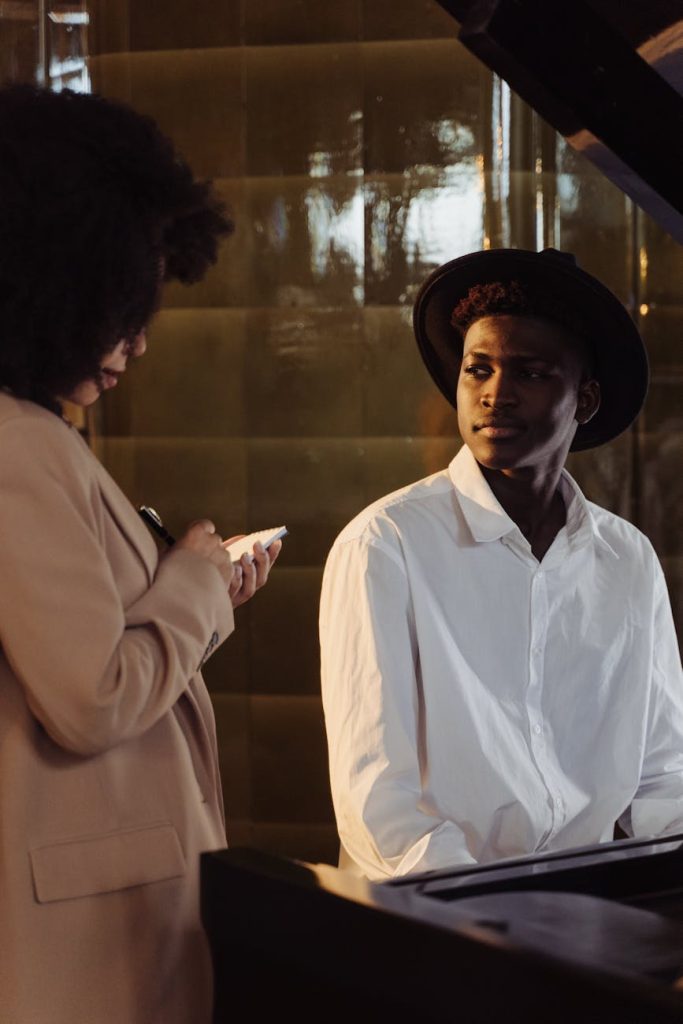Behavioral Interview Basics
When it comes to interviewin’, those good ol’ behavioral questions have pretty much become the norm for checkin’ out a candidate’s street cred and past work mayhem. By zeroing in on what folks have done before, these questions are like crystal balls; they give the interviewers a pretty good hint about how someone might handle future hijinks. Let’s take a look at what these questions are all about, and why being a problem-solving wizard is super important for these chats.
What Are Behavioral Interview Questions?
So, behavioral interview questions are all about gettin’ candidates to spill the beans on how they’ve dealt with work drama in the past. None of that ‘what would ya do’ stuff—this is the real deal. Interviewers want concrete tales from the trenches. It’s about digging up those old deeds to shine a light on their skills and how they work through kinks. With these, folks can see just how good ya are at fixing messes, talking the talk, and makin’ the big choices.
Importance of Problem-Solving in Behavioral Interviews
Problem-solvin’ is the big cheese in behavioral interviews. Employers wanna see you tackle problems like a pro, picking the mess apart and putting it back together neatly. Showing off these skills spells out that you’ve got the brainpower to think smart and switch gears when things don’t go as planned. It’s all about making lemonade out of lemons, thinking outside the box, and innovating your way outta corners.
In these interviews, telling a story about past goofs you’ve fixed proves you’ve got the chops. Explaining your strategy, the moves you made, and the end result shows you know how to walk the walk when things get tricky.
When you’re gearing up for these chats, polishing your tale of triumph over troubles can make you look like a real whiz. Getting why problem-solving stands tall in interviews can give ya the aplomb to face whatever curveballs are thrown your way. If a load of examples is what you need, or maybe some fancy STAR interview questions, we’ve got you covered with extra ammo to power up your prep session.
Preparing for Problem-Solving Queries
When you’re getting ready to tackle those curveballs in behavioral interviews, having a game plan is seriously important. Let’s break down the STAR Method and figure out those must-have problem-solving skills that’ll make you stand out when faced with those tricky interview questions.
Understanding the STAR Method
The STAR Method is your secret weapon for coming up with killer answers to behavioral interview questions. It stands for Situation, Task, Action, and Result. By sticking to this method, you can give answers that are detailed but get straight to the point, showing off your problem-solving chops with stuff you’ve actually done.
| STAR Method |
|---|
| Situation: Share the setup or context of the problem you faced. |
| Task: Spell out the particular task or issue at hand. |
| Action: Lay out the steps you took to fix things. |
| Result: Dish out the outcome and any lessons you picked up. |
Getting the hang of the STAR Method helps you put together responses in a way that shows off your skills clearly and logically. To really nail this approach, check out our behavioral interview questions examples for some handy tips.
Identifying Key Problem-Solving Skills
Beyond knowing the STAR Method, you gotta figure out and emphasize the key problem-solving skills employers love hearing about in these interviews. We’re talking about stuff like thinking critically, breaking things down analytically, being creative, rolling with the punches, and making smart decisions.
| Key Problem-Solving Skills |
|---|
| Critical Thinking: Digging into situations with logic to find solid solutions. |
| Analytical Reasoning: Chopping complex problems into easier bits. |
| Creativity: Thinking outside the box to whip up smart solutions. |
| Adaptability: Shifting gears when the game changes. |
| Decision-Making: Picking the best option with what info you’ve got. |
By weaving these skills into how you answer questions, you can really show you know how to tackle whatever comes your way at work. That’ll catch the eye of potential employers. Dive into our sample STAR interview questions to practice flexing those problem-solving muscles.
Getting ready for problem-solving Q&A with an airtight grip on the STAR Method and those hot-ticket skills can give you the edge in behavioral interviews. Make sure your answers really paint the picture of your problem-solving smarts and experiences.
Common Problem-Solving Scenarios
In job interviews, candidates often face questions that dig into their ability to solve problems on the fly. Let’s break down some of the usual suspects you might square off against during interviews:
Handling Conflict Resolution Situations
Playing nice is great until it ain’t enough. Sometimes, work relationships get rocky. Interviewers might toss you a hypothetical brawl between team members, clients, or other folks involved. Here, you’re expected to shine with your conflict-handling savvy, showing off empathy, sound communication, and some initiative to cool things down.
Overcoming Challenges in a Team Project
Teamwork makes the dream work, right? But it’s not always a walk in the park. Candidates might be quizzed about times they hit snags in group projects. It’s your chance to boast those problem-solving chops, buddy skills, potential to lead, and that stick-with-it attitude when team hurdles pop up.
Demonstrating Critical Thinking Skills
Time to flex that noodle. Employers love those who can think on their feet. You’ll get tossed into scenarios that demand you to sift through info, weigh options, and come up with solid plans. This is your stage to show how you can think strategically, juggle different views, and present well-thought-out, evidence-backed solutions.
Dusting off stories from your past gigs that fit these scenarios is a smart move. Structuring your replies with the STAR method (Situation, Task, Action, Result) not only keeps things tidy but shows you mean business. Practice makes perfect, so check out more dang-good examples here. Going through those can fine-tune your replies and boost your chances of nailing that job!
Crafting Strong Responses
Building solid answers for behavioral interview questions is like mixing experience with strategy and a dash of storytelling. You want your chatter to show you’ve got the guts to tackle problems that come your way.
Structuring Your Answers Effectively
Imagine you’re on stage, and your answer’s the star act. The STAR method (Situation, Task, Action, Result) is your trusty script. It’ll make sure you don’t just ramble:
| STAR Method | What’s Up? |
|---|---|
| Situation | Paint the picture of when this hiccup happened. |
| Task | What did you need to fix or achieve? |
| Action | Describe the moves you made to sort things out. |
| Result | What was the endgame? Boast if it’s worth boasting! |
Using STAR, you spin a yarn that folks will follow, making your talent for fixing stuff shine. It makes sure you’re hitting all those marks and gives your tale some pizzazz.
Using Past Experiences as Examples
Digging up old stories is the heart of these interviews. When you’re asked how you’ve handled sticky situations, real stories beat made-up ones hands down. Dredge up those tales from work or life where you rolled up your sleeves and came out on top.
Pair this with STAR for the win. It’s all about laying down your skills to size up tough jams, plot your moves, and score positive turns. This show-and-tell gives a peek into how you think and act, which is just what they want to see.
Next time you’re facing a behavioral interview, keep this tool kit handy: structure your tales with STAR and amplify them with the nuggets from your journey. It’ll help you spell out your knack for solving puzzles with clarity and swagger, prepping you to ace those tricky interviews.
Strategies for Success
Getting ready for a chat about how you tackle tricky situations at work? It’s all about practicing and making sure your answers match what the job’s looking for. Fine-tuning how you solve problems and fitting your replies to what the job needs can make you shine when you’re chatting with potential employers.
Practice Makes Perfect
Nailing those interviews is all about getting comfy with weird questions they might throw your way about solving problems. Learning the ropes with common interview questions helps you polish your answers. Try out the STAR method (Situation, Task, Action, Result) to keep things neat. It’s like telling a story where you’re the hero, and your problem-solving skills save the day.
Keep practicing how you tell your stories—get someone to throw questions at you, whether a friend or practice interview setup. This not only pumps up your confidence but gets you ready for any brain teasers they might spring on you in the real thing.
Tailoring Your Responses to the Job Requirements
While working on your story-telling magic, make sure your answers stick to what the job wants. Check out the job description to figure out exactly what skills the employers have on their wish list. Pick examples from your work life that show off those skills and how you’ve already put them to good use.
Know what the job’s really about? That’s your secret sauce. It lets you show off how your brains and experience help solve the puzzles they’re worried about. Point out how what you’ve done before perfectly fits the job’s challenges and openings. This will not just show you thrilled to bits about the gig but also adaptable and ready to roll up your sleeves.
When you mix up regular practice with making sure your stories fit like a glove, you’ll waltz into interviews looking sharp and equipped to tackle whatever’s thrown your way. Show off how you’re a problem-solver extraordinaire, all set to make tough tasks blink first in the workplace.
Nailing Your Next Behavioral Interview
Getting a grip on behavioral interviews is all about mixing confidence, a dash of positivity, some sharp listening skills, and being able to make sure you understand what’s being asked. These power-ups help you tackle those tricky questions about solving problems.
Confidence and Positivity
Confidence is your trusty sidekick when you’re hit with questions about solving problems during a behavioral interview. Showing that you trust your skills and methods can really stick in an interviewer’s mind. Smile, show you’re upbeat about your abilities, and don’t worry about having all the answers. It’s more about showing you can handle problems head-on with a can-do attitude.
While you chat about the tough stuff, keep your spirits up. Highlight how you’ve learned from missteps and tweaked your approach over time. If you mix confidence with a good vibe, you’ll let the interviewer see you can be trusted to handle any hiccups at work.
Active Listening and Clarification
Listening carefully is your secret weapon in nailing problem-solving questions in these interviews. Tune in closely to what’s being said, making sure you really get the scenario before jumping in with an answer. Steer clear of quick fixes until you know what’s really going on.
Feel free to hit pause and ask questions if anything’s fuzzy. This tactic not only shows you’re thinking things through, but also that you’ve got the knack for solving problems by understanding them fully first. By probing deeper and chatting back-and-forth with the interviewer, you underline that you can handle tricky issues with a step-by-step approach.
For your next shot at a behavioral interview, keep your head high, stay positive, listen like a hawk, and don’t shy away from asking for more info when necessary. This way, you’ll not only ace those problem-solving answers but also demonstrate you’re ready to dive into challenges with both feet in the work world. If you’re looking for more practice with these kinds of questions, check out our article on behavioral interview questions examples.




